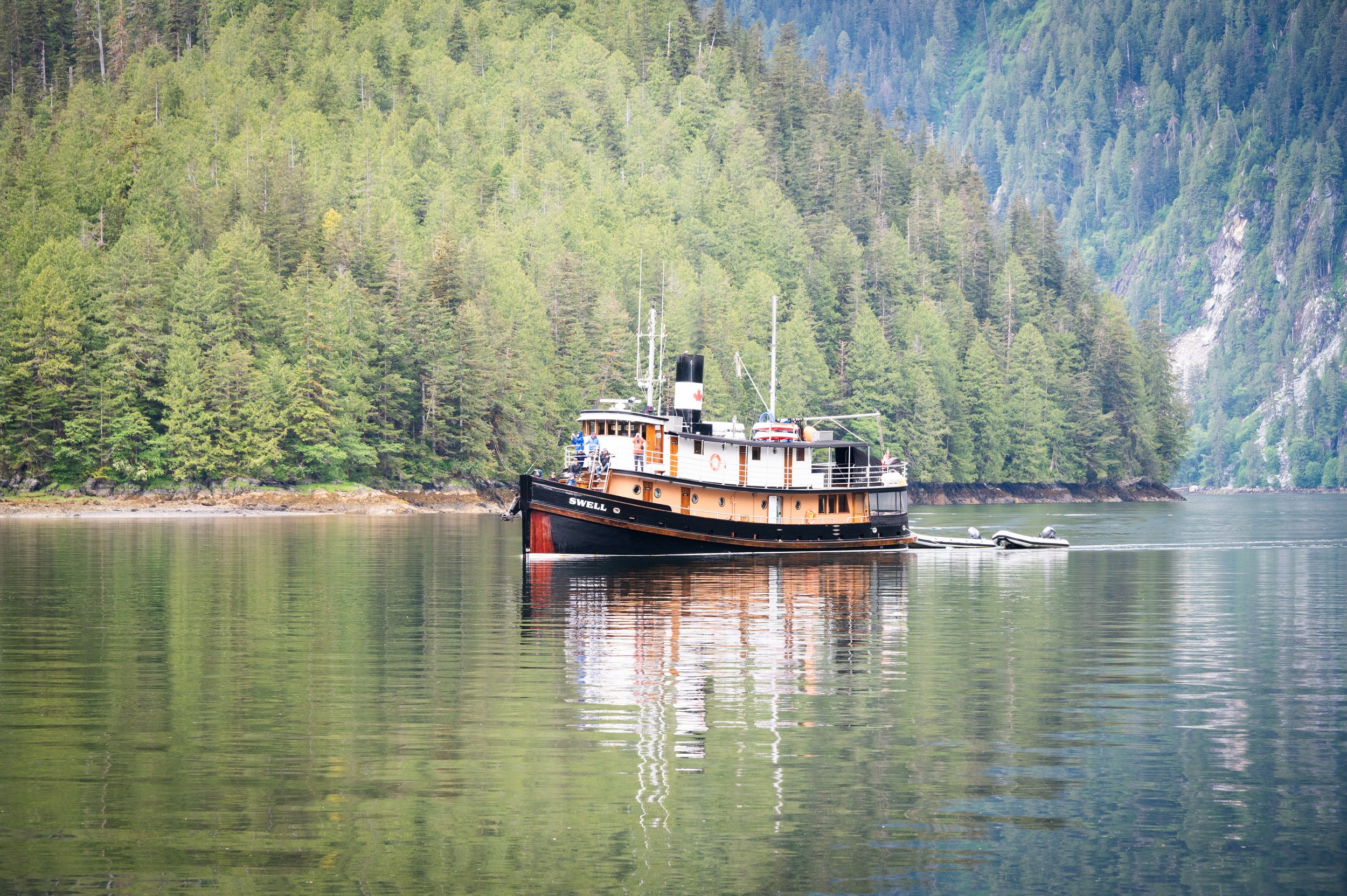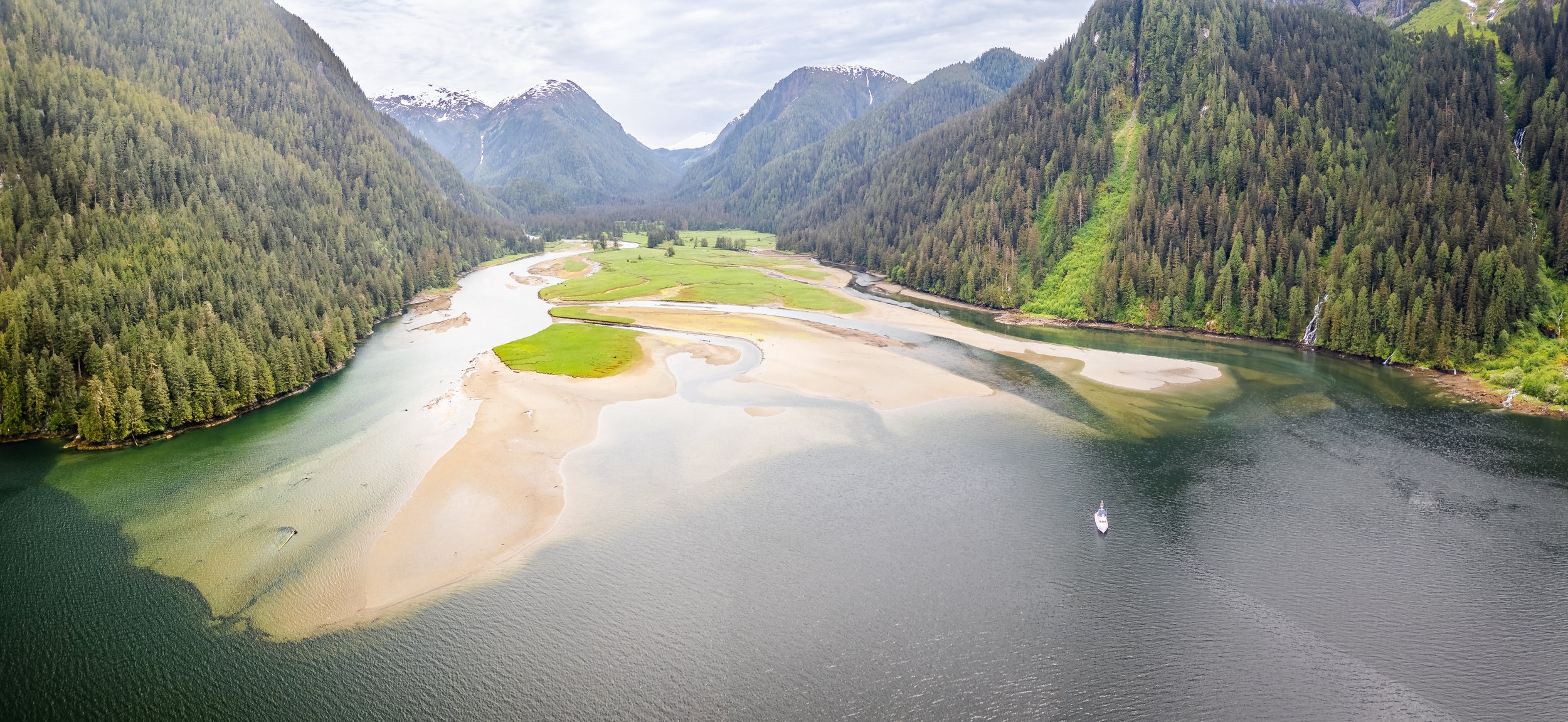Khutze Inlet Lay Day
/Another beautiful day in Khutze, at least to start.
Our only companion, the S/V Passing Cloud, left this morning. We noticed the passengers all staring at the waterfall, and right by it was a mama grizzly and 3 cubs. It’s rare to see that many cubs, and they were very playful.
After that, the inlet started to get a bit crowded. First, we were joined by a Hinckley picnic boat and a small white sailboat. These two anchored at a respectable distance and were able to do so without turning the anchorage into a wakefest.
The the Canadian passenger vessel M/V Swell came in and took the spot in front of the waterfall that had just been vacated by S/V Passing Cloud. I wonder if these two charter ships coordinate their schedules?
m/v sweel arrives in khutze inlet
Swell takes Passing Cloud’s vacated spot in front of the waterfall
Karen has been tracking the first Waggoner Flotilla and thinks their 10 vessels may be joining us later this afternoon. That will definitely crowd this anchorage. As I’ve mentioned, it’s deep and not easy, especially if you enter at high tide like they will.
Sure enough, they stared to arrive in waves. First a 60-foot Grand Banks, following by an Arcturos 50, two 55-foot Flemings, and more.
Karen and I were immediately reminded of our last visit to Khutze, when a boat entered at full speed and waked us so much dinner went flying. These boats came in a bit slower than that, but not as much as you would like. They didn’t slow down early enough to avoid the rocking and rolling.
I also suspect no one had much idea as to what to suspect when anchoring in Khutze. Were they briefed? They would come in, drive toward the “open water” in front of us (that is, towards the mud flats that were covered at high tide) and then slam on the brakes as they saw the seabed rise rapidly.
Then out they would go, stopping again when the depth exceeded 100 feet in just a few boat lengths. They would float there for a while, trying to figure out where to go.
We saw all manner of anchoring techniques, with too many just dropping their anchor and never bothering to set it.
We were scanning on the VHF and heard lots of dialogue between the boats. Several decided to anchor at the mouth of the inlet, off of Green Spit, where the depths and crowding were less. Despite that, we ended up with at least 10 boats anchored at the head of the inlet. It felt overcrowded for sure. It’s a tough place to bring a large flotilla when there are already 4 boats at anchor in a tricky anchorage.
The two Fleming 55’s in front of us in the shallow water over the mud flats may well luck out as the low tonight is a plus 7.6 feett, but they will need to be gone in the morning before the real low arrives along with the mudflats. Even so, if the winds swing back to the NE, they will awake with their sterns looking at some very shallow water.
In the meantime, the M/V Swell launched her two dinghies, called “Flotsam” and “Jetsom”. They saw one bear run away from another and thought it might be a bit of a mating dance. Later, the mama bear and her 3 cubs came back out at the base of the waterfall and put on a show for a couple of hours to the delight of all of us anchored in view.





































